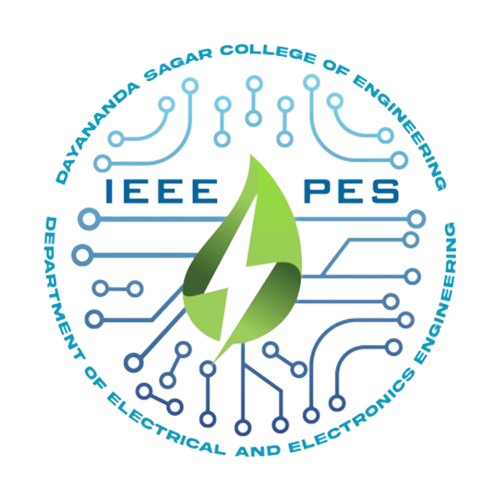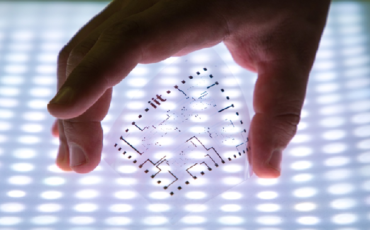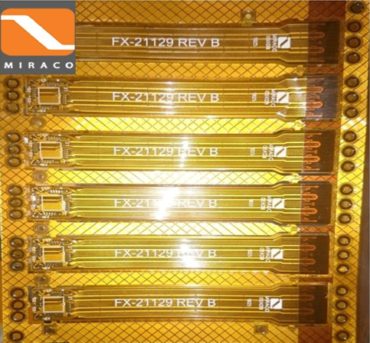Flexible Electronics
Flexible Electronics:
By Lakshmikanth Kadge,
5th Sem, Dept of EEE
Flexible electronics isn’t a new technology, but it has achieved a remarkable progress over the past years and its importance to other industries has increased. IDTechEx analysts forecast that the total market for printed, flexible and organic electronics will grow from $29.28 billion in 2017 to $73.43 billion in 2027
Introduction:
“Flexible electronics is a technology that allows you to build electronic circuits on flexible plastic substrates thus making them bendable and stretchable. Flexible electronics enables new product paradigms that aren’t possible with conventional semiconductors and glass substrates.”
It is a technology for assembling electronic circuits by mounting electronic devices on flexible plastic substrates, such as polyimide, PEEK or transparent conductive polyester film. Additionally, flex circuits can be screen printed silver circuits on polyester. Flexible electronic assemblies may be manufactured using identical components used for rigid printed circuit boards, allowing the board to conform to a desired shape, or to flex during its use. An alternative approach to flexible electronics suggests various etching techniques to thin down the traditional silicon substrate to few tens of micrometers to gain reasonable flexibility, referred to as flexible silicon (~ 5 mm bending radius).
History:
Patents issued at the turn of the 20th century show that early researchers were envisioning ways of making flat conductors sandwiched between layers of insulating material to layout electrical circuits to serve in early telephony switching applications. One of the earliest descriptions of what could be called a flex circuit was unearthed by Dr Ken Gilleo and disclosed in an English patent by Albert Hansen in 1903 where Hansen described a construction consisting of flat metal conductors on paraffin coated paper. Thomas Edison’s lab books from the same period also indicate that he was thinking to coat patterns cellulose gum applied to linen paper with graphite powder to create what would have clearly been flexible circuits, though there is no evidence that it was reduced to practice.
In the 1947 publication “Printed Circuit Techniques” by Cledo Brunetti and Roger W. Curtis[13] a brief discussion of creating circuits on what would have been flexible insulating materials (e.g. paper) indicated that the idea was in place and in the 1950s Sanders Associates’ inventors (Nashua, NH) Victor Dahlgren and company founder Royden Sanders made significant strides developing and patenting processes for printing and etching flat conductors on flexible base materials to replace wire harnesses. An advertisement from the 1950 placed by Photocircuits Corporation in New York demonstrated their active interest in flexible circuits also.
Today, flexible circuits which are also variously known around the world variously as flexible printed wiring, flex print, flexi circuits, are used many products. Large credit is due to the efforts of Japanese electronics packaging engineers who have found countless new ways to employ flexible circuit technology. For the last decade, flexible circuits have remained one of the fastest growing of all interconnection product market segments. A more recent variation on flexible circuit technology is one called “flexible electronics” which commonly involves the integration of both active and passive functions in the processing.
Manufacturing:
Flexible printed circuits (FPC) are made with a photolithographic technology. An alternative way of making flexible foil circuits or flexible flat cables (FFCs) is laminating very thin (0.07 mm) copper strips in between two layers of PET. These PET layers, typically 0.05 mm thick, are coated with an adhesive which is thermosetting, and will be activated during the lamination process. FPCs and FFCs have several advantages in many applications:
- Tightly assembled electronic packages, where electrical connections are required in 3 axes, such as cameras (static application).
- Electrical connections where the assembly is required to flex during its normal use, such as folding cell phones (dynamic application).
- Electrical connections between sub-assemblies to replace wire harnesses, which are heavier and bulkier, such as in cars, rockets and satellites.
- Electrical connections where board thickness or space constraints are driving factors.
Cost benefits:
The processes and materials for manufacturing flexible electronics differ, but the aim is to make them lower cost than conventional electronics. Roll to roll printing has been long considered the ultimate approach to the cost-effective manufacture of electronics over large and small areas. It will remove the waste of materials currently incurred in factories and will drive product costs down. However, there are a few steps to overcome before roll to roll printing becomes the norm.At FlexEnable we have developed a practical approach to the cost-effective manufacture of flexible electronics for flexible displays and sensors. Our processes are compatible with existing flat panel display lines meaning that most of the existing equipment can be reused.
Advantage of FPCs
- Potential to replace multiple rigid boards or connectors.
- Single-sided circuits are ideal for dynamic or high-flex applications.
- Stacked FPCs in various configurations.
Disadvantages of FPCs
- Cost increase over rigid PCBs.
- Increased risk of damage during handling or use.
- More difficult assembly process.
- Repair and rework is difficult or impossible.
- Generally worse panel utilization resulting in increased cost.
Flexible circuit structures:
There are a few basic constructions of flexible circuits but there is significant variation between the different types in terms of their construction. Following is a review of the most common types of flexible circuit constructions,
- Single-sided flex circuits:
Single-sided flexible circuits have a single conductor layer made of either a metal or conductive (metal filled) polymer on a flexible dielectric film. Component termination features are accessible only from one side. Holes may be formed in the base film to allow component leads to pass through for interconnection, normally by soldering. Single sided flex circuits can be fabricated with or without such protective coatings as cover layers or cover coats, however the use of a protective coating over circuits is the most common practice. The development of surface mounted devices on sputtered conductive films has enabled the production of transparent LED Films, which is used in LED Glass but also in flexible automotive lighting composites.
- Double access or back bared flex circuits:
Double access flex, also known as back bared flex, are flexible circuits having a single conductor layer but which is processed so as to allow access to selected features of the conductor pattern from both sides. While this type of circuit has certain benefits, the specialized processing requirements for accessing the features limits its use.
- Sculptured flex circuits:
Sculptured flex circuits are a novel subset of normal flexible circuit structures. The manufacturing process involves a special flex circuit multi-step etching method which yields a flexible circuit having finished copper conductors wherein the thickness of the conductor differs at various places along their length. (i.e., the conductors are thin in flexible areas and thick at interconnection points.)
- Double-sided flex circuits:
Double-sided flex circuits are flex circuits having two conductor layers. These flex circuits can be fabricated with or without plated through holes, though the plated through hole variation is much more common. When constructed without plated through holes and connection features are accessed from one side only, the circuit is defined as a “Type V (5)” according to military specifications. It is not a common practice but it is an option. Because of the plated through hole, terminations for electronic components are provided for on both sides of the circuit, thus allowing components to be placed on either side. Depending on design requirements, double-sided flex circuits can be fabricated with protective coverlayers on one, both or neither side of the completed circuit but are most commonly produced with the protective layer on both sides. One major advantage of this type of substrate is that it allows crossover connections to be made very easy. Many single sided circuits are built on a double sided substrate just because they have one of two crossover connections. An example of this use is the circuit connecting a mousepad to the motherboard of a laptop. All connections on that circuit are located on only one side of the substrate, except a very small crossover connection which uses the second side of the substrate.
- Multilayer flex circuits:
Flex circuits having three or more layers of conductors are known as multilayer flex circuits. Commonly the layers are interconnected by means of plated through holes, though this is not a requirement of the definition for it is possible to provide openings to access lower circuit level features. The layers of the multilayer flex circuit may or may not be continuously laminated together throughout the construction with the obvious exception of the areas occupied by plated through-holes. The practice of discontinuous lamination is common in cases where maximum flexibility is required. This is accomplished by leaving unbonded the areas where flexing or bending is to occur.
- Rigid-flex circuits:
Rigid-flex circuits are a hybrid construction flex circuit consisting of rigid and flexible substrates which are laminated together into a single structure. Rigid-flex circuits should not be confused with rigidized flex constructions, which are simply flex circuits to which a stiffener is attached to support the weight of the electronic components locally. A rigidized or stiffened flex circuit can have one or more conductor layers. Thus while the two terms may sound similar, they represent products that are quite different.
The layers of a rigid flex are also normally electrically interconnected by means of plated through holes. Over the years, rigid-flex circuits have enjoyed tremendous popularity among military product designer, however the technology has found increased use in commercial products. While often considered a specialty product for low volume applications because of the challenges, an impressive effort to use the technology was made by Compaq computer in the production of boards for a laptop computer in the 1990s. While the computer’s main rigid-flex PCBA did not flex during use, subsequent designs by Compaq utilized rigid-flex circuits for the hinged display cable, passing 10s of 1000s of flexures during testing. By 2013, the use of rigid-flex circuits in consumer laptop computers is now common.Rigid-flex boards are normally multilayer structures; however, two metal layer constructions are sometimes used.
- Polymer thick film flex circuits
Polymer thick film (PTF) flex circuits are true printed circuits in that the conductors are actually printed onto a polymer base film. They are typically single conductor layer structures, however two or more metal layers can be printed sequentially with insulating layers printed between printed conductor layers, or on both sides. While lower in conductor conductivity and thus not suitable for all applications, PTF circuits have successfully served in a wide range of low-power applications at slightly higher voltages. Keyboards are a common application, however, there are a wide range of potential applications for this cost-effective approach to flex circuit manufacture.
Application:
Flex circuits are often used as connectors in various applications where flexibility, space savings, or production constraints limit the serviceability of rigid circuit boards or hand wiring. A common application of flex circuits is in computer keyboards; most keyboards use flex circuits for the switch matrix.
In LCD fabrication, glass is used as a substrate. If thin flexible plastic or metal foil is used as the substrate instead, the entire system can be flexible, as the film deposited on top of the substrate is usually very thin, on the order of a few micrometres.
Organic light-emitting diodes (OLEDs) are normally used instead of a back-light for flexible displays, making a flexible organic light-emitting diode display.
Most flexible circuits are passive wiring structures that are used to interconnect electronic components such as integrated circuits, resistors, capacitors and the like; however, some are used only for making interconnections between other electronic assemblies either directly or by means of connectors.
In the automotive field, flexible circuits are used in instrument panels, under-hood controls, circuits to be concealed within the headliner of the cabin, and in ABS systems. In computer peripherals flexible circuits are used on the moving print head of printers, and to connect signals to the moving arm carrying the read/write heads of disk drives. Consumer electronics devices make use of flexible circuits in cameras, personal entertainment devices, calculators, or exercise monitors.
Flexible circuits are found in industrial and medical devices where many interconnections are required in a compact package. Cellular telephones are another widespread example of flexible circuits.
Flexible solar cells have been developed for powering satellites. These cells are lightweight, can be rolled up for launch, and are easily deployable, making them a good match for the application. They can also be sewn into backpacks or outerwear.
Conclusion:
For brands and designers to keep innovating and developing next generation products, they need tools and components that will enable them to do this. Flexible electronics allow the development of flexible components such as flexible displays and sensors which remove form factor constraints and give designers creative freedom. A typical example is the automotive industry where designers are already thinking outside the box by reinventing the car interior with the help of flexible displays.




